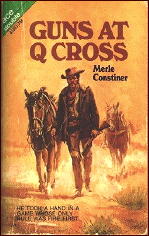REVIEWED BY DAVID VINEYARD:
ERIC AMBLER – The Siege of the Villa Lipp. Random House, US, hardcover, 1977. Ballantine, US, paperback, 1978. First published in the UK as Send No More Roses: Weidenfeld & Nicolson, hardcover, 1977; Fontana-Collins, UK, paperback, 1979.

Eric Ambler is something of a rarity among writers in that his inimitable style neither withered nor grew stale over the years. Late in his career he still turned out superb thrillers like Doctor Frigo or Levanter, as fresh and imaginative as his early work. That isn’t to say his work was always equally brilliant, but over his long career I find nothing severely wanting. Mid-level Ambler, or in collaboration as Charles Rodda, is still well worth reading.
The Siege of the Villa Lipp is well above mid-level in anyone’s estimation, and takes head on a theme that Ambler developed over the course of his career, that of the Able Criminal, a shadowy figure with a hand in most crimes yet who is unknown to police, not even as a person of interest; a super-criminal more able and better concealed than any Carl Peterson, Dr. Fu Manchu, or Ernst Stavro Blofield.
The figure of the Able Criminal first appears in fledgling form in the mysterious Dimitrios in Coffin for Dimitrios. Across the years others have borrowed him, most notably Orson Welles in Mr. Arkadin and John Le Carré in The Night Manager.

He is a figure that dates to the beginning of the genre, think of Poe’s “The Man in the Crowd,†the least likely of unlikely suspects, the spider at the center of the web. John Buchan exploited him in several thrillers in various guises including The Thirty-Nine Steps, The Power House, The Three Hostages, and The Man From the Norlands. Hitchcock uses him as well. Auric Goldfinger, Mr. Big, Doctor No, and Emile Largo in Ian Fleming’s James Bond novels are all examples of the form. He makes fleeting appearances in other books by Ambler, in the forefront of A Kind of Anger, but it is not until this book that he takes center stage, in far more subtle form than most of his co-conspirators.
In the real world he is modeled on men such as Otto Skorzeny, Aristotle Onassis, Sir Basil Zarahoff, John D. Rockefeller, and J. P. Morgan.
The narrator of The Siege of the Villa Lipp is Paul Firman, himself an Able Criminal.
Or is he? According to Firman, he is only a not quite innocent caught between a team of academics who think they have uncovered his secret and have gathered at his remote Italian villa to blackmail him into an in-depth interview, and the real Able Criminal, the dangerous Mr. X Firman has partnered with for most of his career, a shadowy figure manipulating in the background.

While not as funny as the adventures of Arthur Abdel Simpson in Ambler’s The Light of Day (Topkapi) and Dirty Story, Lipp is as droll as an Ealing comedy (albeit a dark and at times violent one), and as easy to cast. It’s hard not to see James Mason or Alec Guinness as Firman, Peter Sellers, in makeup of course, as Professor Krom, the academic who sees in Firman the final proof of his disputed theory, and so on down the line from Krom’s unctuous assistants to Firman’s staff, the ever-wily Yves, and Firman’s beautiful and brilliant mistress Melanie.
The siege of the title proves no metaphor for Firman, his guests, and his allies, find themselves literally under siege from the mysterious X when he learns of Krom’s investigations — under siege and under the gun from within, and from without. Watching Firman scheme, wrangle, and ultimately triumph proves great fun as well as revealing of the Able Criminal at work.
Siege offers, aside from first class thrills, a glimpse at the dangerous world of high finance, several well drawn character studies — not the least its protagonist — fine suspense, a clever detective story, and several startling revelations, especially those Firman discovers about himself, some far more revealing than he would like.
Is he the Able Criminal of Krom’s theory, or a semi-innocent caught between dangerous forces is the question Ambler asks, and as fits the subject no two characters in the book offer the same answer. Krom, who is presented with a mix of humor and admiration, has one answer, and Firman himself another. Is Firman the spider or the fly, or, unwittingly perhaps, both?
The Siege of the Villa Lipp is Ambler’s penultimate novel, but shows no sign of weariness or the kind of neutral writing too often associated with writers near the end of their career. There is still about it the same sense of a glimpse into a twilight world we only suspect, the same fascination with characters on the edge of the civilized society we think we live in, and the same gift for explaining the convoluted and complex ways of finance, crime, and espionage at the highest and lowest levels with perfect reportorial skills. The Old Master proves again why he was an Old Master of the form.
I’m only sad I can’t read all his books again for the first time.

